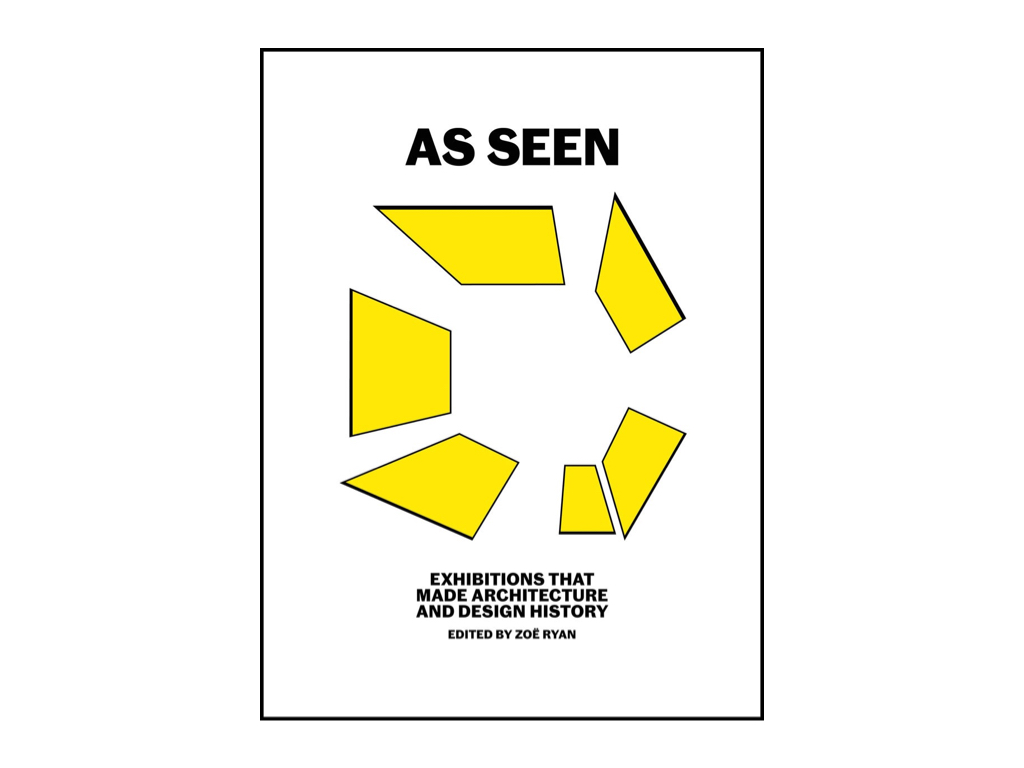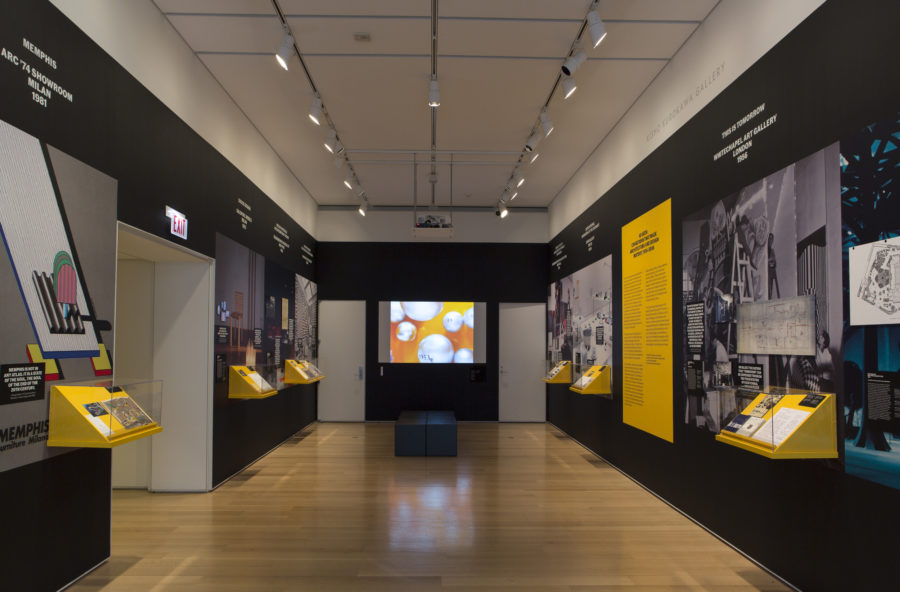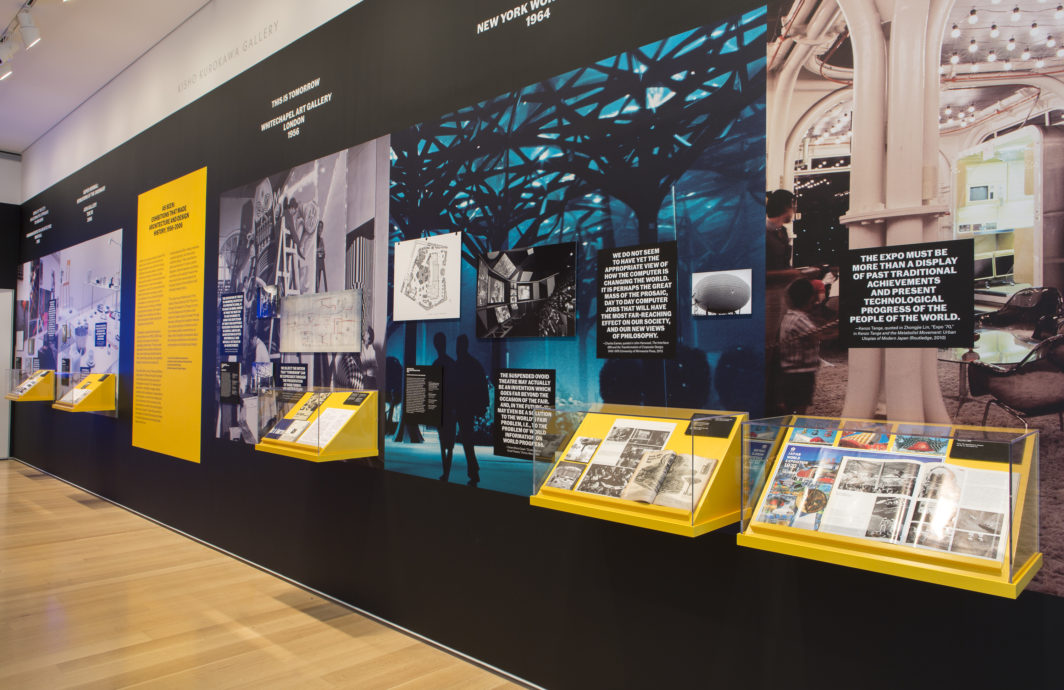“I was surprised to learn how little has been written about the history of architecture and design exhibitions,” says Zoë Ryan, curator of architecture and design at the Art Institute of Chicago. Her new book, As Seen: Exhibitions That Made Architecture and Design History (Yale University Press), tries to fill that gap. Out today, the volume takes a deep dive into 11 pivotal architecture and design shows that took place between 1956 and 2006 in Europe, Japan, and the U.S., and unpacks the ways they affected the practice and public perception of their respective fields. It borrows its name from a 2015 exhibition Ryan presented at the Art Institute of Chicago during the last Chicago Architecture Biennial; the overwhelmingly positive response it received spurred her to expand upon the project in the form of a publication. (To mark the launch of the book, the institution currently has a capsule exhibition of the“As Seen” show on view.) Among its case studies are “This is Tomorrow,” mounted at London’s Whitechapel Gallery in 1959; the IBM pavilion at the 1964 New York World’s Fair; and the Canadian Centre for Architecture’s 2005 presentation “Sense of the City: An Alternative Approach to Urbanism.” Taken together, they demonstrate the powerful potential for exhibitions to challenge social, cultural, and political conventions, and to influence the future. “It’s a critical moment to reflect on this history, at a time when architecture and design are moving in all kinds of different directions,” Ryan says.
Why Architecture and Design Exhibitions Matter
Released today, curator Zoë Ryan’s new book explores the role 11 shows have played in shaping internal and external perceptions of the practice.
By Tiffany Jow October 24, 2017
Essays by a wide range of celebrated contributors—Paola Antonelli, Alice Rawsthorn, Debbie Millman, and Sylvia Lavin among them—add further dimension by tackling topics such as exhibitions as marketing platforms, or what makes a successful show. “Making architecture and design is such a multifaceted process,” Ryan says. “Showing the correspondence, all the materials, sketches, and mock-ups that didn’t work are as fundamental as the realized product. They emphasize what it takes.”
An exclusive excerpt of Ryan’s introduction, focused on the challenges of mounting an architecture show, follows below.
Indeed, exhibition design can help provide a frame that brings the work alive. As the Austrian American designer Herbert Bayer wrote in 1937, creating a rich visual and physical relationship between the viewer and the works on display encourages engagement: “The theme should not retain its distance from the spectator, it should be brought close to him, penetrate and leave an impression on him.”1 Moreover, Bayer argued that every aspect of design—from graphics to interiors and lighting—should be brought to bear on an exhibition’s installation plan. His ideas are still influential today. As art historian Mary Anne Staniszewski notes, “It is in the installation design of the first half of the twentieth century that the sources of such practices as viewer interactivity and site specificity, as well as multimedia, electronic, and installation-based work, are to be found.”2 Given the increasing variety of types of materials that fall under the rubrics of architecture and design, exhibition spaces must be increasingly tailor-made to foster meaningful experiences for viewers, especially given the ubiquity of digital media. At the Art Institute we have provided the tried-and-true one-on-one viewing experience while also encouraging more interactive engagement that brings people together and, when possible, subverts traditional museumgoing experiences. For example, we have invited visitors to touch the artworks, sit on the furniture, and enter full-scale architectural installations to test them out for themselves.
1. Herbert Bayer, “Fundamentals of Exhibition Design,” PM 6, 2 (Dec. 1939–Jan. 1940), p. 17.
2. Mary Anne Staniszewski, The Power of Display: A History of Exhibition Installations at the Museum of Modern Art (MIT Press, 1998), pp. xxii–xxiii.






